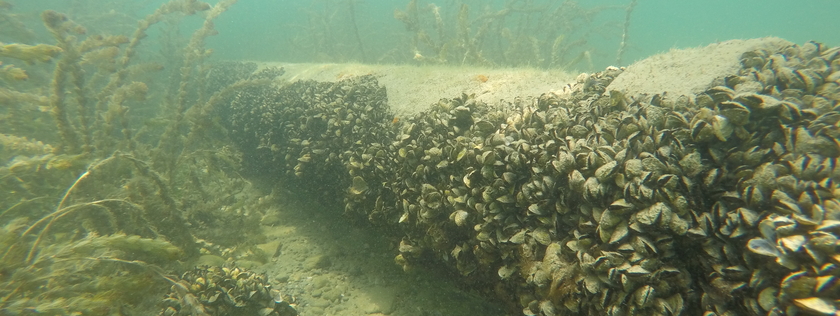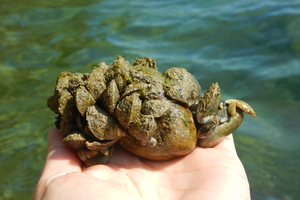Department Aquatic Ecology
Competition between filter feeders in Lake Constance
This project is part of the international research project SeeWandel (additional information can be found at SeeWandel and Seewandel.org).
Several invasive freshwater mussel species have invaded swiss lakes in the past. Especially the zebra and quagga mussel, Dreissena polymorpha and Dreissena bugensis, are challenging our ecosystem by affecting the food web through their high filtration rate and abundance. Due to their high filtration rate they effectively remove phytoplankton from the water column, which thus lacks other organisms as a food source. Less phytoplankton also causes clearer water, enabling light to penetrate deeper into the lake, thus promoting the growth of macrophytes. Additionally, zebra and quagga mussels can attach to various substrates including human made structures, such as anchor chains and jetties, which promotes their high abundance. The quagga mussel was first discovered in Lake Constance in 2016 and has since spread throughout the littoral zone but also colonized deeper habitats. Compared to the zebra mussel, which is found in Switzerland since the 1960’s, the quagga mussel can colonize deeper habitats and occurs in higher abundances.
The aim of this project is:
-
To investigate the invasion pathway and dispersal route of the quagga mussel in Switzerland, with a focus on Lake Constance. Using population genetics, we aim to unravel whether there was only one or several invasion events in Lake Constance and to identify the most likely source of founder populations. Furthermore, we will compare quagga mussel populations from Lake Constance to other populations in Switzerland to identify potential invasion or dispersal routes within Switzerland.
- To investigate the effects of the quagga mussel on the ecosystem. We will here focus on the food web or, more precisely on food competition between zebra and quagga mussels, and other filter feeders, such as water fleas (Daphnia). To do so we will implement various feeding and selectivity experiments and gut content analysis.


